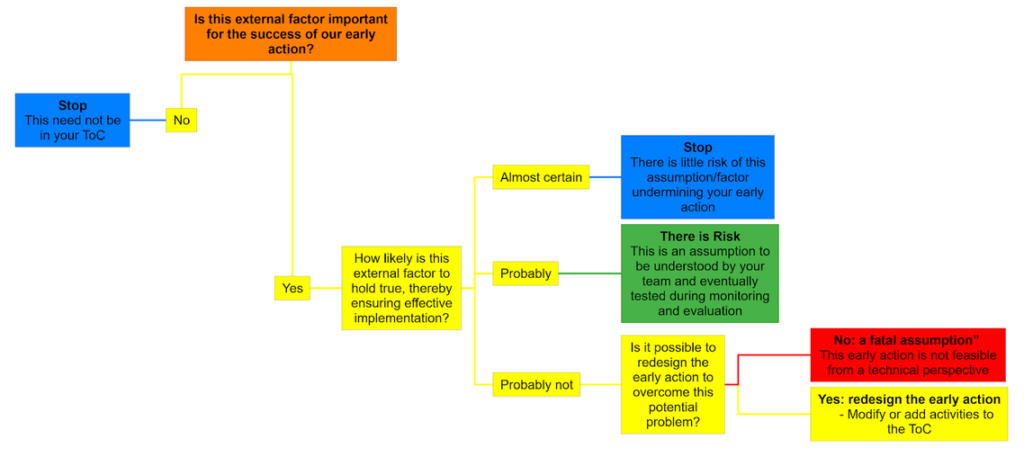Summary
Early actions are at the heart of Forecast-based Financing and each Early Action Protocol. The ideal early action is one, which has the best chance of helping the population at risk to reduce the negative impacts of an extreme event.
The process of identifying impacts, prioritizing those that can and should be addressed by FbF, and identifying early actions that can prevent or mitigate these priority impacts, is therefore central to the development of a strong EAP.
Early actions play a dual role to fill critical gaps in contingency planning and funding, while building upon existing preparedness plans. Careful identification, prioritization and selection of EAs guarantees actions 1) contribute to, prevent, or reduce priority risks and prepare for effective response, 2) are adapted to the local context and feasible to implement in the lead time before the extreme event with the capacities and resources at hand and 3) align with the priorities of communities and local actors as well as with relevant preparedness plans.
This chapter outlines a recursive process for identifying and selecting forecast-based actions that will be triggered and automatically funded based on forecast information.
The different steps below help to answer the following four key questions:
- What are the main impacts of that are caused by the hazard in question?
- Which harmful impacts can FbF reduce?
- What early actions will best reduce these impacts?
- Which of these early actions are currently feasible given the existing context and capacities?
Although the questions and steps below are presented sequentially, in practice, time and resources will be saved by gathering information on all four simultaneously, or iteratively (see Figure 1). Throughout the chapter, different methods are presented that can help understand impacts and how stakeholders experience and perceive the severity of these impacts, to elicit potential early actions. Depending upon the stage of your EAP, you may use each of these methods to zoom into one of these steps, or tackle several steps at once.
The steps, methods and criteria in this chapter were elaborated particularly to support the selection of early actions for EAPs to be submitted to the FbA by the DREF and thus correspond to the requirements of this mechanism. Of course, this guidance can also be used by NS that aim to develop more localized EAPs with own funding, in that case some of the below-described steps and methods could be adapted or weighed differently and some criteria mentioned might be less relevant.
Who is involved?
The selection of EAs should be done by a group of people with interdisciplinary backgrounds, from different sectors and with varied expertise. In some FbF projects, inter-institutional working groups (comprising RCRC, government authorities and other humanitarian organizations) have been set up to develop the EAP jointly and hence select the early actions, in others these tasks are in the hands of the Red Cross FbF team.
Regardless of the team composition, the steps below require the engagement of actors at all levels, from residents, community committees, civil society organizations, local and national governments and agencies, Red Cross and Red Crescent National Societies, other humanitarian and development organizations, research institutions (including climate science community), and the private sector or other relevant actors, as appropriate. Red Cross and Red Crescent National Societies and other humanitarian and development organizations engaged in Forecast-based Financing are encouraged to use these steps in an iterative, flexible way to identify the impacts and actions to be included in their EAP.
Although FbF systems are aimed at covering extensive geographical areas, to ensure an EAP can be activated in those regions most likely to be impacted by hazards, it is important to conduct research for the selection of actions at the local level. As FbF, at least in the context of EAPs funded by FbA by the DREF, does not pre-define communities, and rather decides which communities will receive assistance upon activation, consultations with communities on past impacts, needs and risk factors would need to be carried out with sample communities. Despite this national level, flexible approach it is important to gather community-level data, as it can provide a sense of the type of impacts, risk factors and support needed that might apply to other communities in the larger exposed area. The following steps methods used in the selection of early action could be applied in urban and rural settings at various scales.

